Key Takeaways
- Periodic assessments of security controls are vital to ensure they are effective and function as intended.
- Developing and implementing action plans are essential steps to remediate deficiencies and mitigate vulnerabilities.
- Organizations must implement a continuous monitoring program of their security controls. Automating the process will provide the most specific and timely results.
- Safeguard systems by developing, documenting, and updating system security plans (SSPs) to ensure continued compliance and a robust security posture throughout the security organization.
The Vital Role of Security Assessments
3.12.1. Periodically assess the security controls in organizational systems to determine if the controls are effective in their application. Security control assessment is the cornerstone for robust information security management. Organizations are required to regularly evaluate the effectiveness of security controls in their systems. These assessments validate that the controls are properly implemented, operational, and are achieving the desired security outcomes. They play a pivotal role in identifying vulnerabilities early in the system development life cycle, aiding in making informed risk-based decisions and ensuring compliance with established security practices.
Detailed security assessment reports document the findings and provide a comprehensive analysis of whether security controls meet the organizational requirements. These reports are crucial for decision makers to understand the security posture of their organization’s systems and to plan for necessary enhancements or remediations.
3.12.2. Develop and implement plans of action designed to correct deficiencies and reduce or eliminate vulnerabilities in organizational systems. Following the security control assessment, organizations must develop an action plan and identify milestones to address identified deficiencies and vulnerabilities. This plan outlines the strategies for implementing unaddressed security requirements to mitigate risks. The development of an action plan is a proactive measure that provides continuous improvement in the security framework and helps in maintaining the integrity and resilience of organizational systems.
The documentation of system security plans (SSPs) and action plans provides a roadmap for achieving and maintaining compliance with NIST SP 800-171 requirements standards. These documents are vital for federal agencies and other stakeholders to evaluate the security and risk posture of an organization’s system, influencing decisions on processing, storing, or transmitting Controlled Unclassified Information (CUI).
3.12.3. Monitor security controls on an ongoing basis to ensure the continued effectiveness of the controls. Continuous monitoring provides timely information about emerging threats to organizations. Organizations’ best practices should include having accessible reports and security information dashboards available to refer to so potential threats can be promptly identified and addressed. Consistently evaluating security controls and risks will give organizations the ability to make informed decisions. In addition, automation allows for frequent updates to be made to systems that play a crucial role in the continuous monitoring process. Effective continuous monitoring consists of outputs that provide specific, measurable, actionable, relevant, and timely information.
3.12.4. Develop, document, and periodically update system security plans that describe system boundaries, system environments of operation, how security requirements are implemented, and the relationships with or connections to other systems. SSPs outline your organization’s strategy to secure its information systems and relate security controls to requirements. The security controls and system environments work together to safeguard data.
Developing SSP
- Identify the systems that are in the plan, including infrastructure, applications, and databases.
- Define the boundaries of each system, including hardware, software, data, and network components.
- Describe the environment in which the systems will operate; such as physical locations, network type (internal, external, or cloud), and interconnected systems.
- Determine the security requirements for the systems considering factors such as data sensitivity, regulatory compliance (HIPAA or PCI-DSS), and organizational needs.
- Outline the security controls to be implemented in order to meet the requirements.
- Describe how the systems are connected to other systems, including the data flow and dependencies between systems.
Documenting SSP
- Ensure the document is clear, concise, and easy to understand by technical and non-technical individuals.
- Enhance clarity by providing diagrams and flowcharts to represent system boundaries and relationships.
- Organize the information logically and follow a consistent structure.
Updating SSP
- Regularly review and update the SSP at least annually or after any significant changes to the systems or the environment.
- Conduct security assessments and vulnerability management findings, and update the controls to address newly discovered risks.
- Incorporate new security requirements from regulation changes or evolving threats,
Achieving Mastery in Security Assessments
Implementing the Security Assessment requirement as outlined in NIST SP 800-171 is crucial for organizations that handle CUI. These processes ensure that security controls are not only in place but are also effective, and that vulnerabilities are promptly and effectively mitigated. By adhering to these standards, organizations can safeguard their information systems against evolving threats and maintain compliance with federal requirements. A SSP is a living document that requires continuous monitoring. By following these steps, organizations can develop, document, and maintain an effective SSP and stay ahead of advancing threats.
These are just a few examples of how to implement a Security Assessment whether you are a DoD Contractor or part of the Defense Industrial Base (DIB). Look for our next blog on System and Communications Protection.
Stay Ahead of the Game: Ensure Your NIST SP 800-171 Compliance for DoD Contracts
IBSS will use our 20 years of corporate DoD cybersecurity experience to prepare you for NIST SP 800-171 compliance. We specialize in developing cybersecurity strategies that align with organizational business processes to detect or prevent cyber attacks. We identify threats and vulnerabilities, and we assist organizations with managing risks to critical data. We provide expert support to promote compliance with Defense Federal Acquisition Regulation Supplement (DFARS), Federal Information Security Modernization Act (FISMA), Federal Risk and Authorization Management Program (FedRAMP), NIST SP 800-171, and Privacy requirements.
Contact our cybersecurity experts now to get a free consultation on how to develop your company’s NIST SP 800-171 SSP.





